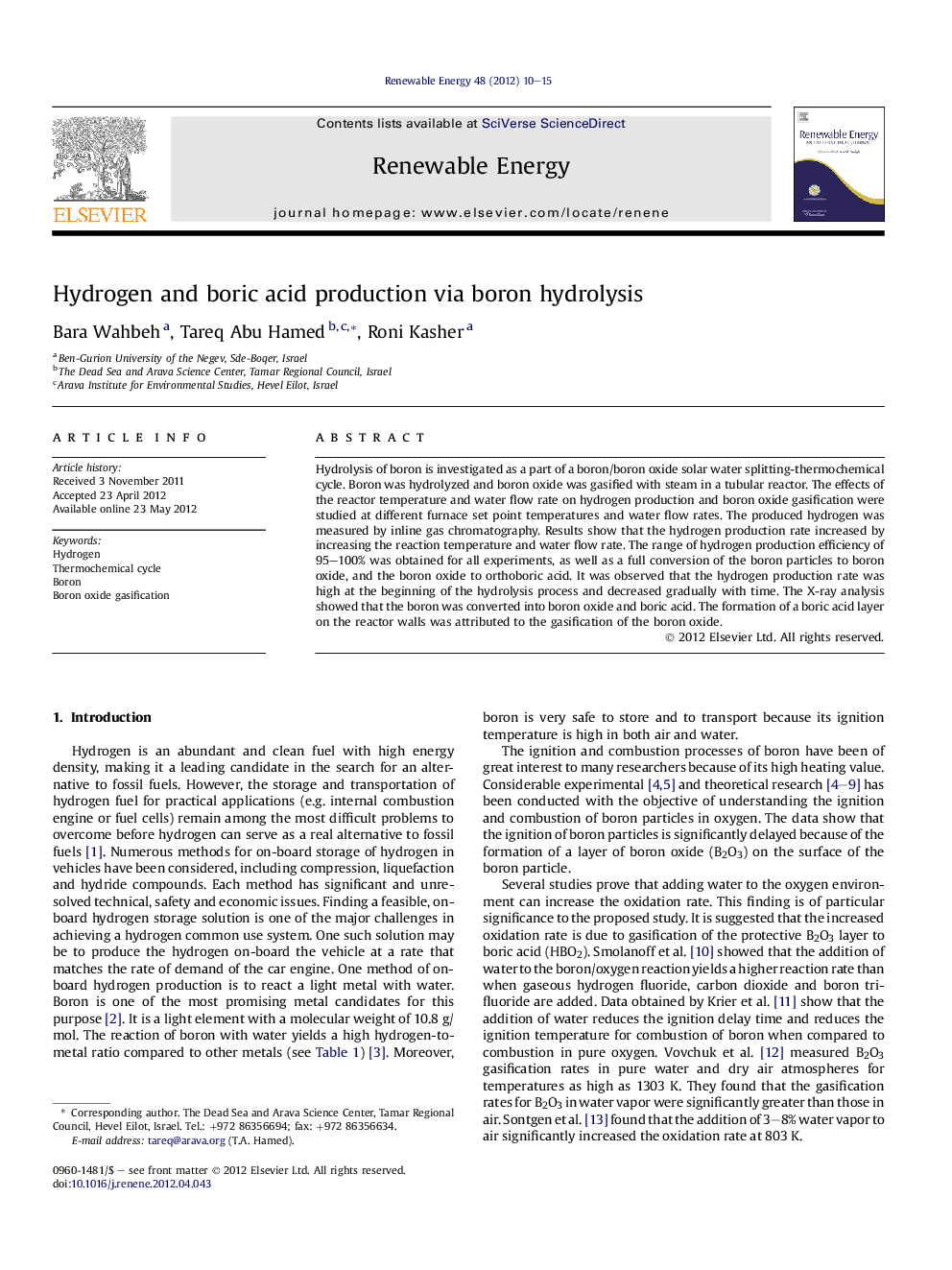| Article ID | Journal | Published Year | Pages | File Type |
|---|---|---|---|---|
| 300850 | Renewable Energy | 2012 | 6 Pages |
Hydrolysis of boron is investigated as a part of a boron/boron oxide solar water splitting-thermochemical cycle. Boron was hydrolyzed and boron oxide was gasified with steam in a tubular reactor. The effects of the reactor temperature and water flow rate on hydrogen production and boron oxide gasification were studied at different furnace set point temperatures and water flow rates. The produced hydrogen was measured by inline gas chromatography. Results show that the hydrogen production rate increased by increasing the reaction temperature and water flow rate. The range of hydrogen production efficiency of 95–100% was obtained for all experiments, as well as a full conversion of the boron particles to boron oxide, and the boron oxide to orthoboric acid. It was observed that the hydrogen production rate was high at the beginning of the hydrolysis process and decreased gradually with time. The X-ray analysis showed that the boron was converted into boron oxide and boric acid. The formation of a boric acid layer on the reactor walls was attributed to the gasification of the boron oxide.
► The hydrolysis of boron under wide range of temperatures and water flow rates was investigated. ► Full conversion of boron to boron oxide was obtained. ► The hydrogen production efficiency increased with temperature and steam flow rates. ► The gasification of boron oxide was faster at higher temperatures and water flow rates.
